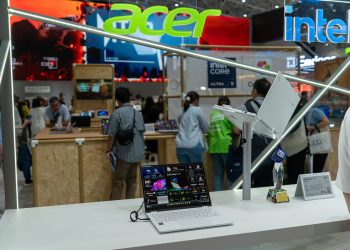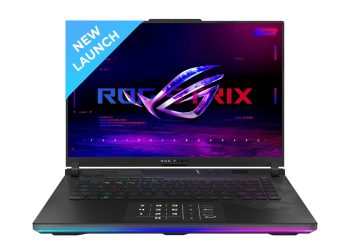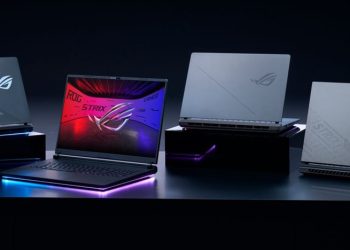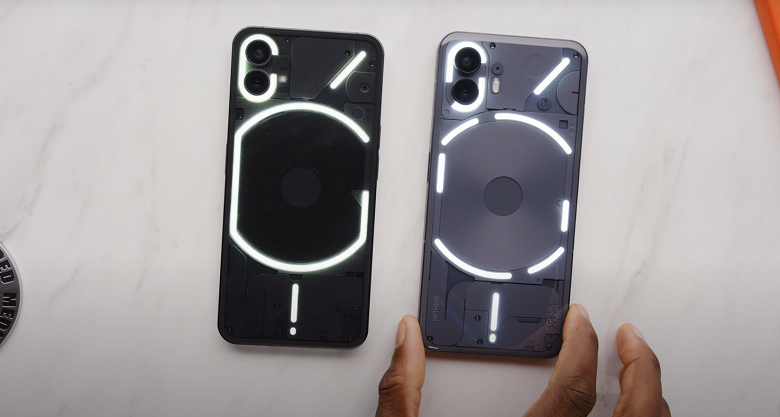Specifications, equipment, and software
Let’s say it again: the versions labeled PH317-53 are laptops equipped with a 17-inch IPS-matrix; PH315-53 are 15-inch models. We are talking about one of these today. The table below lists all the possible combinations of hardware for the smaller and lighter version of the Predator Helios 300.
By the way, we tested one of the most sophisticated Predator modifications. The tested sample (labeled PH315-53-75AB) is equipped with a 6-core Core i7-10750H and GeForce RTX 2070 Max-Q graphics, 24 GB of RAM, as well as a terabyte hard drive and solid-state drive. The version without preinstalled Windows at the time of writing cost an average of 146,000 rubles in Moscow retail.
The Killer E2500 gigabit controller is responsible for the wired network in the laptop, and the Killer Wireless-AX 1650i is responsible for the wireless connection. The updated Wi-Fi module supports IEEE 802.11b / g / n / ac / ax standards with 2.4 and 5 GHz frequencies and a maximum bandwidth of up to 2.4 Gbps and Bluetooth 5.0.
Appearance and input devices
All Acer Predator gaming computers have a recognizable design: it is black interspersed with white and blue; these are strict, chopped, and to some extent brutal forms; it is a recognizable logo – in laptops, by the way, it is highlighted during operation. The build quality of the laptop has remained unchanged when compared to the 17-inch version and can still be considered excellent, as are the materials used. The display lid and the area around the keyboard of the “Predator” are made of metal, the rest of the body is made of matte plastic.
The dimensions and weight of the Predator Helios 300 are standard. The laptop weighs 2.5 kg, and it is quite possible to carry such a load with you in a backpack if there is an urgent need for this. The case thickness is 25 mm. Naturally, the “Predator” corresponds to all the fashion trends in notebook building: the side frames of the screen are 9 mm thick.
The cover of the review hero opens approximately 150 degrees, and its hinges are rather tight, but it can be easily opened with one hand.
All I / O ports of the laptop are located on the sides. At the back, only the connector for connecting an external power supply unit is “worn in”. Unfortunately, the laptop does not support USB Power Delivery – readers are kindly asked to note the availability of this feature on gaming laptops.
The laptop has an Ethernet port on the left, two USB 3.1 Gen1 A-types, and a 3.5mm headset jack. On the right are HDMI and mini-DisplayPort outputs, another USB 3.1 Gen1 and a USB 3.1 Gen2 C-type connector. Having pored over the lack of a card reader, I generally state that the laptop still has the necessary set of ports.
The photo above clearly shows that a very rare guest visited the test laboratory. Yes, the presence of a digital block in modern gaming “tags” becomes a real gimmick, but in the Predator Helios 300, it is.
The keyboard layout of the review hero completely repeats the one used in the 17-inch version of “Predator” – even the size of all buttons has not changed. So again I had to get used to the tiny F1-F12 row, as well as the not very large right Shift and Tab.
The keyboard has 4-level (in terms of brightness) RGB backlighting. Moreover, in the program PredatorSense, you can configure four different zones of light or use one of five dynamic profiles, such as “Breathing”, “Wave”, “Zoom”, “Shift” and “Neon”.
In general, it turned out to be quite convenient to play and work with the text behind the Predator’s keyboard.
Naturally, the 720p webcam, which all Predator Helios 300s are equipped with, regardless of the screen diagonal, has not gone anywhere. Its image quality, however, is only sufficient for warm tube video meetings with relatives and friends. For streaming, it’s better to buy a separate camera.
Internal structure and upgrade options
The large Predator Helios 300 was easy to disassemble, and I honestly didn’t expect to run into trouble disassembling the 15 ” version. The method for removing the bottom was simple: unscrew all existing screws, gently pry the edge of the removable plate with something with plastic and slowly detach it from the rest of the case. But something went wrong – the bottom could not be separated!
Nevertheless, intelligence reports that the laptop’s cooling system does not differ from that used in the 17-inch “Predator”, and consists of four copper radiators, three heat pipes, and a pair of tangential fans. We will definitely check the efficiency of its work, but so far the presence of large copper plates of black color attracts attention.
The fans blow out heated air from both the back and the side of the case. The manufacturer claims that the AeroBlade 3D impellers have a unique blade shape that maximizes air exchange inside the laptop case. Each of the 59 blades is 0.1mm thick, all made of metal, and has an intricate profile that Acer says reduces turbulence and noise.
The laptop has good upgrade opportunities. The test unit is equipped with 24 GB of DDR4-3200 RAM, recruited with two modules of 8 + 16 GB. A Western Digital WDC PC SN730 SSD is installed in one of the two M.2 2280 slots, and a Seagate ST1000LM049-2GH172 hard drive is inserted in the 2.5-inch drive slot. Over time, it will be possible to install another fast SSD into an empty M.2 port, and no one forbids changing the HDD. Accordingly, the 8 GB DDR4 memory bar can be replaced with the same module, but with a larger capacity.
conclusions
Everything that I once wrote about the 17-inch model, in fact, can be addressed to the 15-inch version of the Predator Helios 300. Acer has a good laptop that has no serious flaws. I note the good build quality and the ability to upgrade the device. The cooling system is tuned in such a way that it keeps the main components of the laptop cool and does not work too loudly. Finally, the graphics level of the GeForce RTX 2070 (albeit in the Max-Q design) is enough to comfortably play all modern games in Full HD resolution.









